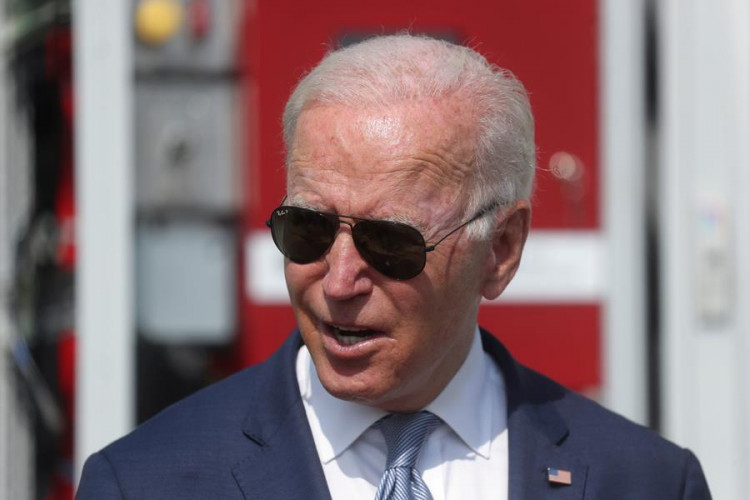This year marks the 10th anniversary of the comprehensive partnership between the U.S. and Vietnam. After tumultuous relations spanning six decades, including the Vietnam War launched by the U.S. that resulted in millions of casualties, the two nations didn't normalize diplomatic relations until 1995. In 2013, they established a comprehensive partnership.
Since this partnership's inception, the U.S. has looked to Vietnam as a key ally as its strategic focus shifted to the Asia-Pacific region. In 2017, then-U.S. President Donald Trump introduced the "Indo-Pacific strategy" at an APEC forum in Vietnam.
Last February, the U.S. labeled Vietnam a "leading regional partner" in its "Indo-Pacific strategy" document, placing it in the same category as India, Singapore, and New Zealand. The U.S. made clear its intentions to bolster relationships with these "leading regional partners."
Several top U.S. officials have visited Vietnam this year. President Joe Biden spoke with Nguyen Phu Trong, the General Secretary of the Communist Party of Vietnam, and the USS Ronald Reagan made a port call in Da Nang, Vietnam.
On August 28th, the White House announced that Biden will visit Vietnam on September 10th, marking his first visit as president. Some reports suggest that during Biden's visit, the U.S. might sign a "strategic partnership" agreement with Vietnam, taking the bilateral relationship a notch higher.
Vietnam, for its part, adheres to a non-aligned stance. Last year, during a visit to China, Trong reiterated Vietnam's "Four No's" policy, which includes not aligning against another country. Recently, Vietnam has fostered ties with nations such as China, the U.S., Russia, and India, aiming to maximize its national interests.
Biden's Maiden Visit
According to the White House, Biden's visit will last a day, during which he'll meet with Trong and other Vietnamese leaders to discuss enhancing U.S.-Vietnam cooperation.
The two nations will discuss promoting Vietnam's economy, emphasizing technology and innovation-driven growth. They'll also enhance people-to-people ties through educational exchanges and workforce development initiatives, collaborate on climate change solutions, and work towards regional stability and peace.
Reports, citing anonymous sources, suggest that Biden might sign a "strategic partnership" agreement with Vietnam during the visit, focusing on bolstering Vietnam's R&D capabilities in high-tech sectors like semiconductor manufacturing and AI. Neither the U.S. nor Vietnam has commented on these speculations.
Last month, Biden, while attending a fundraiser for the 2024 presidential campaign, mentioned that Vietnamese leaders want the U.S. to become a key partner, alongside Russia and China.
Speculations abound that Biden might be hinting at a possible elevation to a "comprehensive strategic partnership" with Vietnam. Currently, only China, Russia, India, and South Korea have such partnerships with Vietnam.
Since early this year, the U.S. has been pushing for an upgraded relationship with Vietnam. During his April visit, U.S. Secretary of State Antony Blinken expressed the hope of elevating bilateral ties. In 2021, the trade between the two nations reached $139 billion, up 300 times from when they established relations in 1995. Vietnam is now the U.S.'s eighth-largest trading partner, while the U.S. is Vietnam's top export market and second-largest trading partner, just behind China. U.S. investments in Vietnam have exceeded $11.4 billion.
Major U.S. companies, including Apple, Ford, Boeing, SpaceX, and Lockheed Martin, visited Vietnam this March as part of the largest U.S. business delegation ever, indicating Vietnam's role in the U.S.'s supply chain diversification plan.
Balancing Relations
Post-Cold War, Vietnam maintained its non-aligned stance. Last October, Trong's visit to China made him the first foreign leader to visit after the 20th Communist Party Congress.
During his China visit, Trong emphasized Vietnam's "Four No's" policy. While Vietnam doesn't align militarily, it has fostered good relations with China, the U.S., Russia, India, South Korea, Japan, Australia, the Philippines, and the EU. Richard Javad Heydarian, a Filipino scholar, termed Vietnam's strategy as "multi-alignment."
Heydarian notes that Vietnam balances its relations with various countries to ensure strategic autonomy and benefits. Though Vietnam has good ties with Western countries, it maintained a neutral stance during the Russia-Ukraine conflict and continued its defense relations with Russia. After Western sanctions affected Russia's arms supply, Vietnam increased its defense cooperation with India.
Given the current U.S.-China relations, some Western scholars believe it's unlikely for Vietnam to strike a strategic partnership with the U.S. this year.
China remains Vietnam's top trading partner, with bilateral trade rising to $234.92 billion last year. China is also the leading supplier of intermediate goods to Vietnam.
Objective factors, such as political systems and human rights, still pose challenges to U.S.-Vietnam relations. Derek Grossman, a senior defense analyst at Rand Corporation, has criticized Vietnam's human rights record, hinting at domestic U.S. opposition to a strategic partnership.
Le Hong Hiep, a researcher at Singapore's Yusof Ishak Institute, notes that Vietnam's decision to upgrade its relationship with the U.S. would be unexpected. If such a partnership occurs, Vietnam would likely make overtures to China to maintain balanced relations.
Earlier this year, Vietnam showcased this balancing act. While the USS Ronald Reagan's port call in Da Nang was seen by U.S. media as warming U.S.-Vietnam relations, Vietnamese Prime Minister Pham Minh Chinh and Foreign Minister Bui Thanh Son were visiting China.






